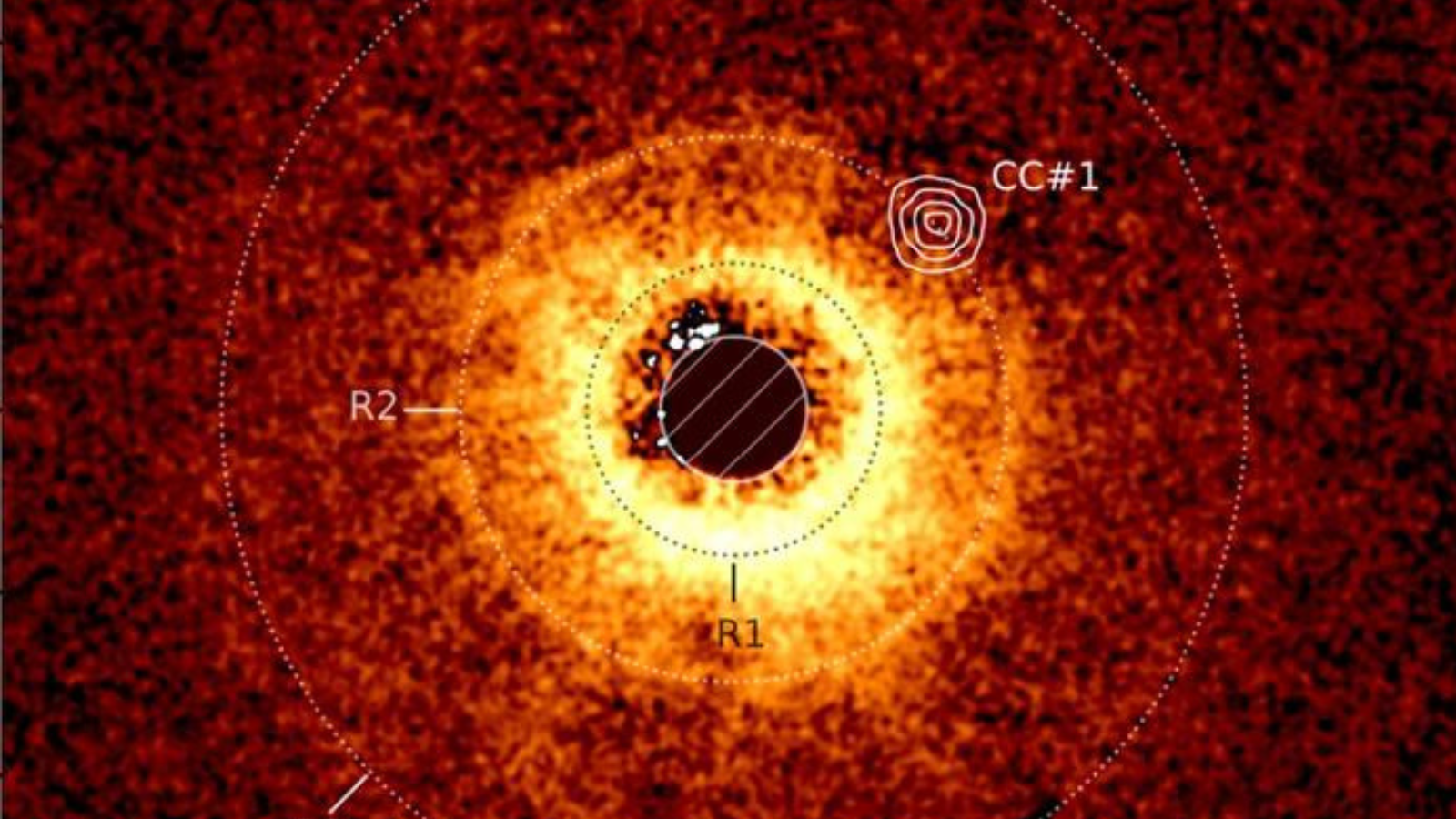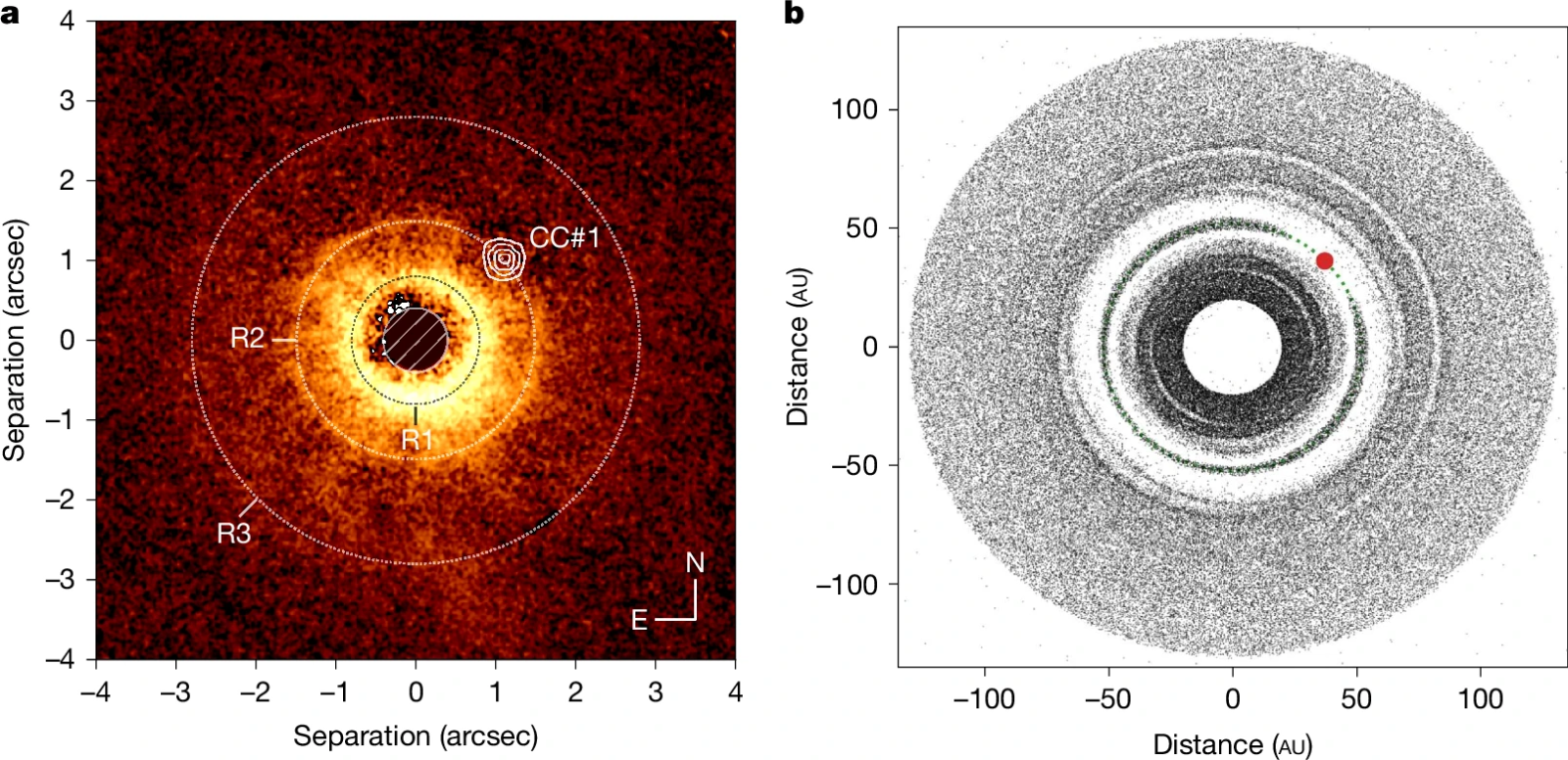Follow us on Google News (click on ☆)
Named TWA 7b, this exoplanet stands out for its exceptionally low mass, equivalent to just 0.3 times that of Jupiter. Located 111 light-years from Earth, it orbits a young star called CE Antilae. The star, only a few million years old, offers a rare spectacle with its face-on debris disk visible from our planet.

Image of the disk around the star TWA 7 captured using the SPHERE instrument on ESO's Very Large Telescope. The image taken with JWST's MIRI instrument is overlaid. The empty region around TWA 7 B in the R2 ring is clearly visible.
Credit: A.-M. Lagrange et al.
The discovery of TWA 7b was made possible by JWST's sensitivity to infrared radiation emitted by young, low-mass planets. The MIRI instrument, equipped with a coronagraph, allowed the faint glow of the planet to be distinguished despite the intense light from its host star. This technique paves the way for identifying other similar worlds.
JWST's observations revealed that CE Antilae's disk is divided into three distinct rings. The presence of TWA 7b explains the formation of a narrow ring and empty regions in this disk. These structures, sculpted by the planet's gravity, confirm simulations conducted by astronomers.
This discovery highlights JWST's importance in exoplanet exploration. Its ability to directly image low-mass planets like TWA 7b represents a major breakthrough. Astronomers are already anticipating future discoveries, with the prospect of studying even lighter and more distant worlds.

Image a: Combined view of the dust disk around the star, with data from SPHERE and JWST. Dense regions are visible, while the center is masked.
Image b: Simulation showing how a planet shapes the surrounding disk through its gravity.
How does JWST detect exoplanets?
The James Webb Space Telescope primarily uses its MIRI instrument to detect exoplanets. This instrument is sensitive to infrared radiation, allowing it to capture the heat emitted by young planets.
An integrated coronagraph blocks the intense light from host stars, revealing the presence of orbiting planets. This technique is particularly effective for low-mass planets like TWA 7b.
Direct detection of exoplanets represents a major technical challenge. JWST, with its cutting-edge instruments, overcomes these obstacles by offering unmatched precision.
Why are debris disks important?
Debris disks, like the one surrounding CE Antilae, are remnants of planetary formation. They contain dust and gas that were not incorporated into planets.
Studying these disks allows astronomers to trace the history of planetary systems. The observed structures, such as rings and empty regions, often indicate the presence of unseen planets.
These disks also serve as natural laboratories for studying planetary formation processes. They provide valuable clues about how planets interact with their environment.
Finally, observing debris disks around young stars helps us understand the diversity of planetary systems in our galaxy.